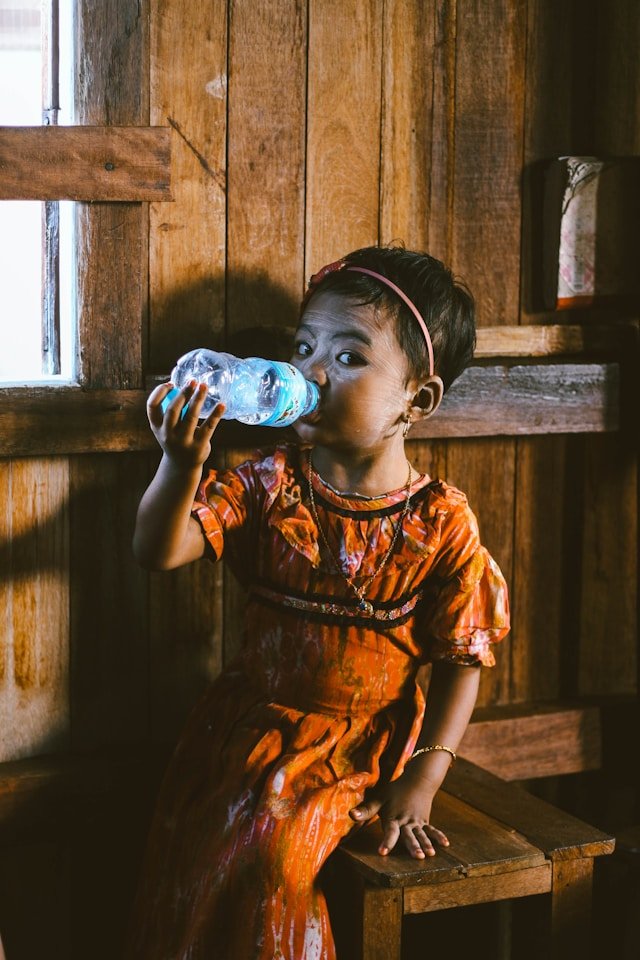Staying hydrated is essential for growing children, but how much water should kids actually drink every day? The answer depends on several factors, including age, weight, activity level, and even the weather. Ensuring your child meets their daily water intake is vital for their physical health, mental performance, and overall well-being.
Why Hydration Is Important for Children
Water plays a key role in regulating body temperature, aiding digestion, transporting nutrients, and flushing out toxins. For children, who are constantly active and growing, adequate hydration is even more critical. Dehydration in kids can lead to fatigue, poor concentration, headaches, and constipation. In more severe cases, it can contribute to kidney problems or heat-related illnesses.
Children’s hydration needs differ from adults because their bodies have a higher percentage of water, and they are often less aware of thirst cues, especially during play or sports.
Recommended Daily Water Intake for Kids by Age
The National Academies of Sciences, Engineering, and Medicine and health authorities like the CDC provide general guidelines for daily water intake for kids:
| Age Group | Daily Water Intake (from all sources: water, beverages, food) |
|---|---|
| 1–3 years | ~4 cups (1 liter) |
| 4–8 years | ~5 cups (1.2 liters) |
| 9–13 years | 7–8 cups (1.6–1.9 liters) |
| 14–18 years | 8–11 cups (1.9–2.6 liters) |
Tip: About 20% of our daily water intake typically comes from food (especially fruits and vegetables), while the rest comes from drinks—primarily plain water.
These numbers represent general recommendations. Active children or those living in hot climates, like the UAE, may need more to stay properly hydrated.
Signs of Dehydration in Kids
Parents should be aware of the warning signs of dehydration in children, especially during the summer or sports activities:
- Dry mouth or lips
- Fewer wet diapers (in infants) or less frequent urination
- Dark yellow urine
- Headaches or dizziness
- Fatigue or irritability
- No tears when crying
Encourage your child to sip water throughout the day—even before they feel thirsty. Thirst is often a late indicator of dehydration.
How to Encourage Healthy Hydration for Children
Healthy hydration habits can be taught early. Here are some strategies parents can use:
- Make water fun – Use colorful bottles, fun straws, or fruit infusions to make water more appealing.
- Lead by example – Let your child see you drinking water regularly.
- Pack water with school lunches – Encourage them to drink water instead of sugary juices or sodas.
- Offer hydrating snacks – Watermelon, cucumbers, oranges, and strawberries are excellent hydrating options.
- Use reminders – Set water break alarms or use hydration tracking apps for older kids.
Are Other Beverages Okay?
While water should be the primary drink, other fluids like milk and 100% fruit juice (in moderation) can contribute to total fluid intake. Avoid or limit sugar-sweetened beverages like soda, sports drinks, and sweetened juices, which can lead to weight gain and dental issues.
Special Considerations for UAE Climate
In hot climates like the United Arab Emirates, children may need to drink more water than average, especially during outdoor activities. Even mild dehydration can impact a child’s mood, energy, and academic performance. Parents should be proactive during summer camps, beach days, or any outdoor sports.
Final Thoughts
So, how much water should kids drink? The answer varies, but the key is to make hydration a daily priority. Whether your child is a toddler or a teen, keeping them hydrated supports their energy levels, brain function, and physical development. Provide access to clean water, educate them about its benefits, and turn drinking water into a healthy habit that lasts a lifetime.
